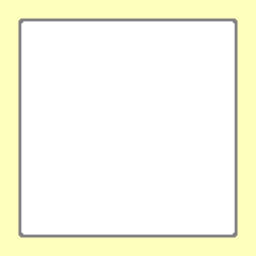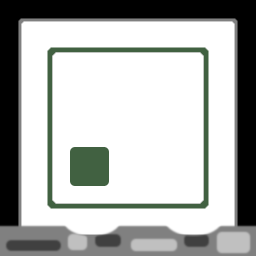


Home
Rules
Play!
Tactics
Notes
Contact
Written
The Book
Various & Sundry
Basic Tactics
-
When moving into a zone, always move to the nearer of the two columns.
Do this unless you have a good reason to do otherwise, such as evading an opposing piece.
-
Two weak pieces, advancing together, can always force one piece past a single opposing strong piece.
The opposing piece can only make a hostile overture against one piece.
The other piece may advance past on the next move.
-
It can be advantageous to coax an opposing piece into making a hostile overture against your piece, rather than have your piece make the hostile overture.
-
As the game progresses, take note of the identities of the pieces the other player has lost.
From this, you can discern the possible identities of his remaining pieces,
and which terrain is more favorable to your cause.
Elements
Playing ContraPloy well involves balancing four elements: piece count, information, position, and momentum.
- Piece Count
-
This is pretty straight forward.
Having more pieces is a good thing.
- Information
-
Knowing the identity of an opposing piece is an advantage.
Especially given that any piece can capture any opposing piece,
as long as they meet in the right location.
- Position
-
Typically a piece is well positioned if it has friendly terrain in front of it.
Also keep in mind: in most board games, the advantage goes to the player who controls the center of the board.
However, in ContraPloy it is important to control the top and bottom edges of the board,
to prevent an opponent from flanking.
Finally, note that due to the barriers, the farther forward a piece is located,
the more constricted are its options — to move is to commit.
- Momentum
-
The player who arrives first to an enviable position has an advantage.
But in ContraPloy, momentum is a two-edged sword.
Since a piece may not move backwards, if a player's pieces are already in optimal position,
momentum works against him, because now he must move out of this good position and into bad position!
Strong vs. Weak Side
For each player, the board has a strong and a weak side (top or bottom edge).
Strong Side
Consider the the six highlighted spaces within the portion of the board shown below.
Count how many pieces the player could possibly move to those spaces.
Answer: 18 — all but 3.
Weak Side
Now consider the the four highlighted spaces below.
Again, count how many pieces the player could possibly move to those spaces.
Answer: 11 — considerably fewer.
Note that your strong side faces your opponent's weak side, and vice versa.
A Staring Contest
The square player is smiling. Why?
Neither side can threaten the other. But the single square piece is tying down two circular pieces.
In general, when it is unclear how to advance your own cause, making problems for your opponent is effort well-spent.
Maneuver (by Sun Tzu, The Art of War)
-
Normally, when the army is employed, the general first receives his
commands from the sovereign.
He assembles the troops and mobilizes the people.
He blends the army into a harmonious entity and encamps it.
-
Nothing is more difficult than the art of maneuver.
What is difficult about maneuver is to make the devious route the
most direct and to turn misfortune to advantage.
-
Thus, march by an indirect route and divert the enemy by enticing
him with a bait.
So doing, you may set out after he does and arrive before him.
One able to do this understands the strategy of the direct and the indirect.
-
Now both advantage and danger are inherent in maneuver.
-
One who sets the entire army in motion to chase an advantage will not
attain it.
-
If he abandons the camp to contend for advantage the stores will be lost.
-
It follows that when one rolls up the armor and sets out speedily,
stopping neither day nor night and marching at double time for a
hundred li, the three commanders will be captured.
For the vigorous troops will arrive first and the feeble straggle
along behind, so that if this method is used only one-tenth of the
army will arrive.
-
In a forced march of fifty li the commander of the van will fall,
and using this method but half the army will arrive.
In a forced march of thirty li, but two-thirds will arrive.
-
It follows that an army which lacks heavy equipment, fodder, food and
stores will be lost.
-
Those who do not know the conditions of mountains and forests, hazardous
defiles, marshes and swamps, cannot conduct the march of an army.
-
Those who do not use local guides are unable to obtain the advantages
of the ground.
-
Now war is based on deception.
Move when it is advantageous and create changes in the situation by
dispersal and concentration of forces.
-
When campaigning, be swift as the wind;
in leisurely march, majestic as the forest;
in raiding and plundering, like fire;
in standing, firm as the mountains.
When hiding, be as unfathomable as the clouds;
when moving, fall like a thunderbolt.
-
When you plunder the countryside, divide your forces.
When you conquer territory, defend strategic points.
-
Weigh the situation, then move.
-
He who knows the art of the direct and the indirect approach will be
victorious.
Such is the art of maneuvering.
Home
Rules
Play!
Tactics
Notes
Contact
Written
The Book
Various & Sundry
Copyright 2023 Jim Swift (except the stuff by Sun Tzu)
![]()
![]()
![]()





















































